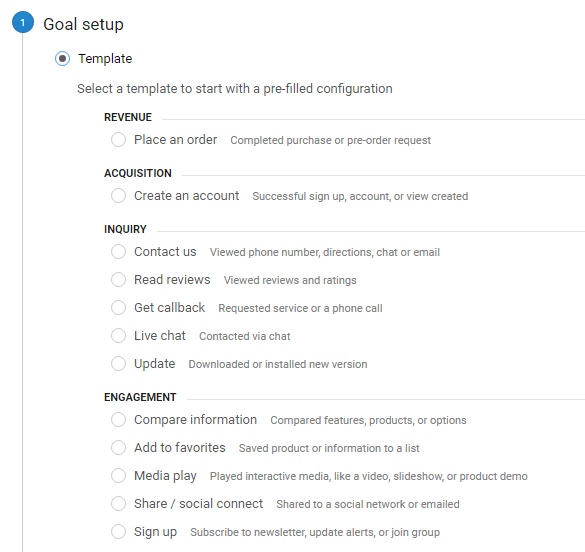What Data Is Google Analytics Goals Unable to Track: A Complete Guide
Wiki Article
Unveiling the Blind Attractions: Comprehending What Google Analytics Goals Can not Measure
In the world of digital analytics, Google Analytics stands as a powerful tool for monitoring and evaluating on-line individual communications. Understanding what Google Analytics objectives can not determine is critical for getting an extensive view of customer actions and interaction.User Actions on External Operatings Systems
Understanding just how users interact on external systems is important for maximizing online approaches. Outside systems, such as social media networks, referral sites, and on-line discussion forums, play a significant function in driving website traffic to a business's internet site. By evaluating user actions on these platforms, companies can acquire important insights into the effectiveness of their marketing initiatives and the preferences of their target market.One secret aspect of user actions on exterior systems is the recommendation resource. By tracking where the customers are coming from, companies can determine which systems are driving one of the most traffic to their internet site. This info can help firms assign their sources extra properly, focusing on the systems that produce the best outcomes.

Offline Interactions and conversions
Analyzing user behavior on external platforms provides valuable understandings right into on the internet methods; however, thinking about offline conversions and communications is equally essential for a comprehensive understanding of a company's total efficiency. While Google Analytics excels at tracking on-line communications, it falls brief in recording the full customer trip that typically consists of offline touchpoints. Offline conversions, such as in-store acquisitions or phone inquiries, play a substantial function in many services' success. Ignoring these interactions can cause an altered view of the efficiency of advertising projects and general company efficiency.
Attribution Beyond Last Click
When diving into the world of electronic advertising analytics, it comes to be necessary to look past the solitary touchpoint of the last click for an extra extensive understanding of attribution. While Google Analytics supplies valuable insights into user actions, counting solely on last-click attribution can be restricting - what data is google analytics goals unable to track. Attribution models that go beyond the last click provide a more nuanced view of the client trip, thinking about all the touchpoints that lead to a conversionAcknowledgment beyond the last click allows marketing professionals to assign credit to numerous communications along the conversion path, giving a more clear image of the performance you can try this out of different marketing networks. By checking out multi-touch attribution versions such as straight, time decay, or position-based acknowledgment, companies can better allot their advertising budgets and maximize their methods for maximum effect.
Understanding the impact of each touchpoint in the conversion process is crucial for making educated decisions and making the most of ROI. By welcoming attribution beyond the last click, organizations can get deeper understandings into consumer habits and tailor their marketing efforts better.
Cross-Device and Cross-Browser Monitoring

In a similar way, cross-browser monitoring complements cross-device tracking by capturing individual habits as they switch over in between various internet browsers. Understanding just how individuals engage with websites on various internet browsers can help marketing professionals maximize their on-line experiences to make certain consistency and functionality across different systems.
Qualitative Information and Individual Intent
Comprehending individual intent with qualitative data analysis is vital for creating targeted electronic advertising and marketing approaches that reverberate with the requirements and preferences of the target audience. Qualitative information offers insights right into the 'why' behind customer activities, shedding light on motivations, feelings, and choices that quantitative data alone can not capture. By analyzing customer responses, remarks, and communications, online marketers can discover important information concerning individual intent, allowing them to tailor their messaging, material, and offerings to better straighten with what their target market is seeking.Qualitative information likewise helps in understanding the context in which users involve with a web site or app. This contextual understanding enables marketing experts to produce more tailored and relevant experiences, inevitably driving higher involvement and conversion rates. By diving into user intent with qualitative data evaluation, companies can gain a much deeper understanding of their target audience, causing much more reliable advertising and marketing methods that meet individuals' needs and assumptions.
Verdict
To conclude, Google Analytics goals have limitations in measuring customer behavior on outside systems, offline conversions, attribution past last click, cross-device and cross-browser tracking, and qualitative information related to individual intent. what data is google analytics goals unable to track. It is essential for companies to be knowledgeable about these internet blind spots in order to supplement their data analysis with various other tools and techniques to obtain a more extensive understanding of their target market and boost their overall electronic marketing techniquesBy assessing user behavior on these platforms, services top article can obtain valuable insights right into the performance of their advertising and marketing efforts and the preferences of their target audience.
Evaluating individual habits on exterior systems provides important insights into on the internet methods; nonetheless, considering offline conversions and interactions is similarly important for a detailed understanding of a business's general efficiency.In digital advertising analytics, moving beyond last-click attribution to check out cross-device and cross-browser monitoring is necessary for obtaining an all natural understanding of customer communications across different platforms and devices. By evaluating user feedback, remarks, and communications, marketing experts can reveal beneficial details regarding individual intent, allowing them to tailor their messaging, web content, and offerings to much better line up with what their audience is seeking.
By diving into user intent via qualitative information analysis, companies can gain a much deeper understanding of their target audience, leading to extra reliable advertising techniques that satisfy individuals' needs and assumptions.
Report this wiki page